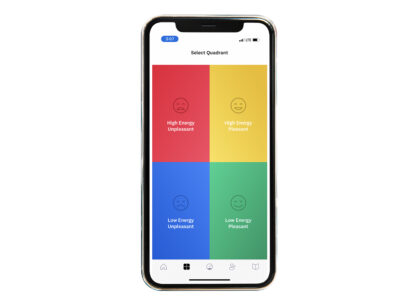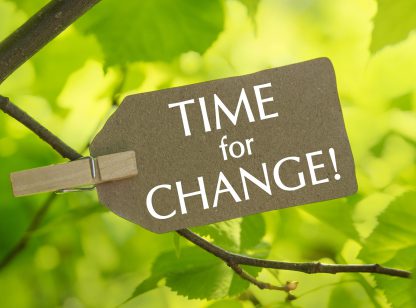Whether or not you are a veteran, if you are dealing with a traumatic event that threatened your life and are experiencing intrusive memories propelling your mind back to that event (flashbacks), you are probably suffering from Post Traumatic Stress Disorder (PTSD).
By definition, PTSD is a condition involving an impairment of the stress response, characterized by a re-experiencing of a traumatic episode often triggered by unconscious distressing memories.[sup]1[/sup]
Traumatic events that can result in PTSD include natural disasters; war; incarceration; being arrested; assault; physical, sexual or verbal abuse; neglect; motor vehicle accidents; molestation; or rape.[sup]2[/sup]
In general, triggers that galvanize flashbacks are reminders of the event that often come out-of-the blue–seeing a car accident, watching a movie or television show, certain smells, or certain holidays.[sup]3[/sup]
The diagnosis of PTSD is based on its symptoms–re-experiencing the event, avoiding reminders of the event, increased anxiety, emotional arousal, social isolation, self-medication with alcohol and drugs, and pervasive hyper-vigilance.[sup]4[/sup]
Although the incidence of PTSD (also known as “shell shock”) is particularly high in war veterans, the disorder can strike anyone regardless of age or sex.[sup]5[/sup] In a survey of 5,692 participants, the lifetime prevalence of PTSD among men was 3.6% and 9.7% among women. In a study of 4,023 adolescents between the ages of 12 and 17 the prevalence was estimated to be 3.7% for boys and 6.3% for girls.[sup]6,7[/sup]
The traditional treatment for PTSD includes focusing on the trauma, medication, and psychotherapy.[sup]8[/sup] It also includes life coaching.[sup]9[/sup] The aim of the treatment is to explore thoughts and feelings about the trauma, working through feelings of guilt, learning how to cope with intrusive memories, and addressing relationship issues.[sup]10[/sup]
A non-traditional intervention that is gaining popularity is yoga. The benefits of yoga are attributable to the fact that it ameliorates the physiological effects of stress.11 Preliminary results from a study at Harvard found that veterans diagnosed with PTSD showed remarkable improvement in their symptoms after ten weeks of yoga classes, which included stretching, meditation, and breathing exercises.[sup]12[/sup]
Another particularly effective treatment modality that has received little attention is Neuro Linguistic Programming (NLP).[sup]13, 14[/sup] NLP is used often by life coaches to explore the relationships between how the client thinks (Neuro), communicates (Linguistic), as well as her/his patterns of behavior (Programs).[sup]15[/sup]
According to Austin, traditional approaches to treating PTSD are at best ineffective and at worst, simply exacerbate the symptoms. “Skillful use of NLP methodologies can often eliminate much of the intrusive imagery and emotional pain [of PTSD] within 1 or 2 sessions. There is no requirement to ‘relive’ events or endlessly talk about them.”[sup]16[/sup]
Although frequently thought of as a war veteran’s illness, PTSD can affect anyone–adults as well as children–who experience a traumatic, life-threatening event. It is a condition that must be treated appropriately. Healing-art professionals treat clients suffering from PTSD by availing themselves of medical, as well as alternative modalities of treatment–medication, psychotherapy, life coaching, yoga, and/or NLP.
PTSD affects not only the patient, but also loved ones, friends, and coworkers. Coping with this disorder can be a grueling and emotionally draining experience. But with the treatments now available, those who suffer from PTSD can move forward and begin to enjoy a happier, more productive, and healthier life.
Jaime Carlo-Casellas, Ph.D. is a Stress Management Specialist, a Certified Life Coach, and a Registered Yoga Instructor and can be reached at 760.464.2150
Sources: 1) As defined by the Kentucky Cabinet for Health and Family Services. 2) Schnurr, P, et al: Department of Veterans Affairs: Best Practices Manual for Posttraumatic Stress Disorder (PTSD) Compensation and Pension. 3) Tull, M: Rates of PTSD in Veterans, About.com Guide, Nov., 2008. 4) Smith, M and Segal J—Contributors: Post-traumatic Stress Disorder (PTSD) — Symptoms, Treatment and Self-Help, Dec., 2010. 5) Jaimie L. Gradus, DSc, MPH National Center for PTSD, Department of Veteran’s Affairs, Jan., 2007. 6) Kilpatrick, DG, et al: National Survey of Adolescents. J Traumatic Stress 13:3 2000. 7) Bisson J, Andrew M: Psychological treatment of post-traumatic stress disorder (PTSD). Cochrane Database Syst Rev. 2007. 8) Birmes, P, et al: The Predictive Power of Peritraumatic Dissociation and Acute Stress Symptoms for Posttraumatic Stress Syndrome Symptoms: A Three-Month Prospective Study. Am J Psychiatry 160:7 Jul, 2003. 9) Burris K: Life Coach: The Only Evidence Based PTSD/Suicide Intervention Is Blocked By NIMH From Scientific Review. In: Holistic Health Articles. (www.holistichealtharticles.com) 2009 . 10) Hamblen, J: Treatment of PTSD: VA National Center for PTSD, Jan., 2010. 11) Ibid. 12) Zimmerman, R: Harvard, Brigham Study: Yoga Eases Veterans PTSD Symptoms, Dec., 2010. 13) Livingwell, J: 25 techniques for treating emotional trauma and PTSD. (www.livingwell.com), Feb., 2010. 14) Livingwell, J: 25 techniques for treating emotional trauma and PTSD. (www.livingwell.com), Feb., 2010. 15) Walker L: Changing with NLP: A Casebook of Neuro-Linguistic Programming in Medical Practice. Radcliffe Medical Press. Jan., 2004. 16) Austin A: Post Traumatic Stress Disorder (PTSD) (www.23nlpeople.com)












































Comments (0)